
views
Using Water or Ice
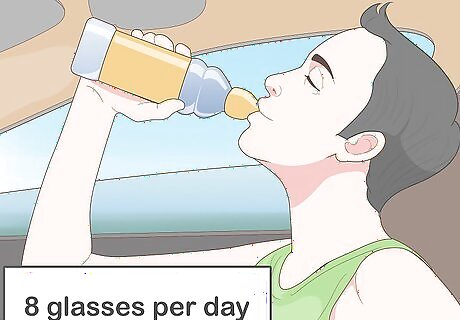
Drink a cold beverage to stay hydrated. When your body is properly hydrated, it regulates its temperature much more efficiently. Sip on cool water or another cold drink like iced coffee or tea. Drink frequently throughout the day, aiming for at least 8 8 oz (230 g) glasses of water per day. If you wait until you feel parched or very thirsty, your body is already dehydrated. Keep cold drinks in an insulated thermos or travel mug so they stay colder for longer.
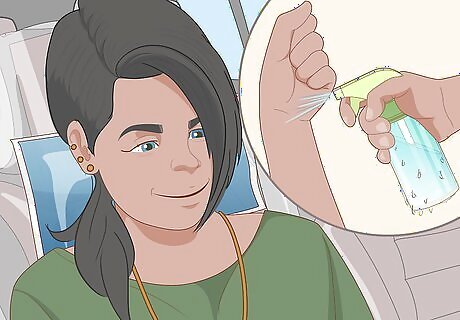
Put cold water, an ice pack, or ice on your wrists and back of your neck. These are pulse points, which are closely connected to the part of your brain that controls your body temperature. Placing something cold on these areas will cool you off faster. Other pulse points include your temples and the spot behind your knees. Spritzing cold water on your pulse points with a spray bottle has the same effect. Drape a cold rag over pulse points if you don't have an ice pack or ice. Make Your Own Freezer Pack Stick a plastic water bottle in the freezer for at least 3 hours or until it's completely frozen. Remove it to use as a freezer pack in the car. Then, when it's melted, drink the water to stay hydrated and cool. Talk about double-duty!
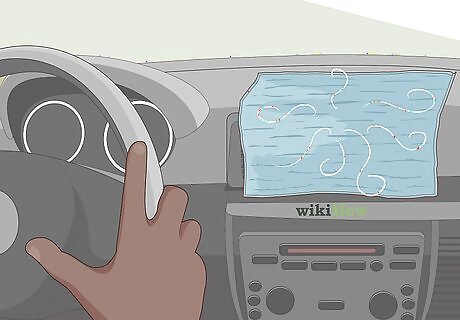
Hang a wet rag over the middle vent of the car if it blows out air. If there's air coming out of your AC vent, even if it's warm, cool it down with a damp washcloth. Use clothespins or small clamps to secure the rag to the top of the vent. Have a few wet rags ready to replace it with since it will dry out fairly quickly. Freeze your rags ahead of time for extra coolness. Make sure you freeze them flat so they cover the vents when they're hanging. Don't leave the rags in your car when you get out or mildew can form on them.
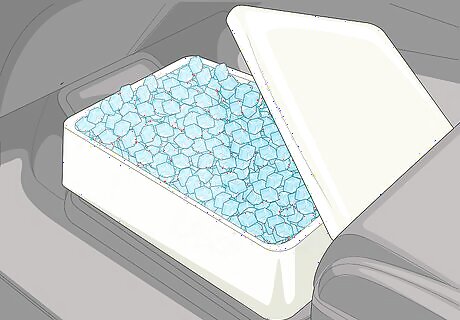
Set a block of ice in a pan by the floor vents to cool the air. When air coming out of the bottom vents passes over the ice, the ice will lower the temperature of the warm air. To prevent melted ice from leaking all over your car, rest the ice block in a plastic pan or baking tin. You can also put ice cubes in a polystyrene or thermocol container. Keep the lid open and place it on the floor. For longer car rides, bring back-up ice in an insulated cooler.
Dressing Appropriately

Choose loose clothing in lightweight fabrics like linen or cotton. Tight clothes trap heat against your body whereas looser clothing that sits away from your skin allows hot air to escape and cool air to enter. Look for pieces in fabrics that are breathable and let more air through. Other breathable fabrics besides linen and cotton include silk, chambray, and rayon. Wear a flowy rayon dress if you're a woman or, if you're a man, opt for a loose, cotton T-shirt, for example.
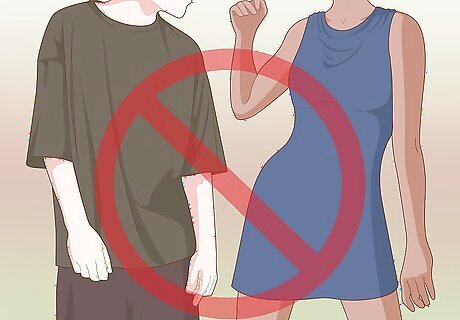
Wear light-colored clothing that reflects the sun. Clothes in pale shades keep you cooler because they don't absorb as much heat from the sun. White is the coolest color you can wear since it reflects all wavelengths of light, but lighter shades of red and yellow are also effective. Avoid dark colors like black or navy. They absorb sunlight and heat, making you feel hotter. Keep a change of clothes in your car in case you sweat through the ones you're wearing.
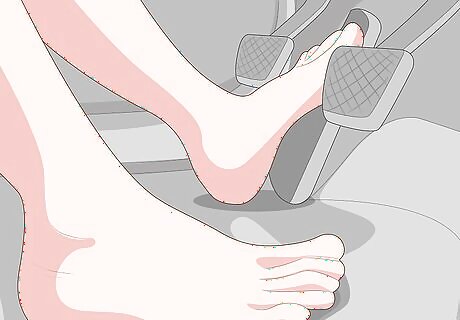
Drive barefoot if it's legal where you live. Your feet play a big part in controlling your body temperature. Don't overheat them with socks and closed-toe shoes. Instead, keep them exposed to help release heat from your body. Check your local traffic laws to make sure driving barefoot is legal in your area. Driving in sandals or open-toed shoes will also help keep you cool. Be sure there's nothing sharp on the floor, like a screw or piece of broken glass.
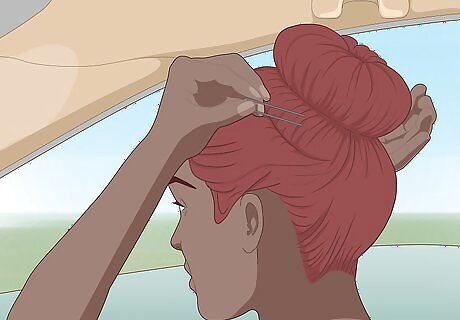
Pull your hair off your neck if you have long hair. Since the back of your neck is a pulse point, covering it will heat your body up faster. For men or women with hair that's longer than your neck, pull it up in a ponytail or bun while you drive. Double braids or a French twist are other styles that will keep your hair off your neck. Consider wetting your hair before putting it up, too. Driving with damp hair cools your scalp as the air dries it.
Keeping the Inside of the Car Cool
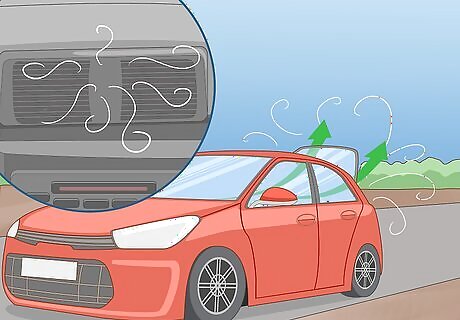
Roll down at least 2 windows to allow air to pass through the car. If you only open 1 window, not only will the air not circulate as well, you may also get a bass "thumping" noise caused by resonance at certain speeds. Adjust how far down you put the windows based on how much air you want. If you have a fan-operated fresh air vent, open it and turn on the fan. Then open a rear window enough to draw a draft through your automobile. Opening the car's sunroof or back window will bring in even more fresh air. If it's sunny out, though, wear a hat if you decide to open the sunroof so you don't get even hotter!
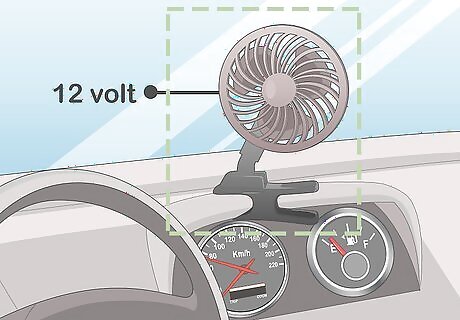
Plug a fan into the cigarette lighter if you want to increase airflow. Buy an inexpensive 12-volt fan from an auto parts store or online retailer. Clip it on the sun visor or rearview mirror, or stand it on the dashboard. Switch this on while you're driving to help circulate the air and cool you off. For extra cool air, hang a damp rag on the fan. Another option is a solar-powered fan if you live somewhere that gets a lot of bright sunlight.
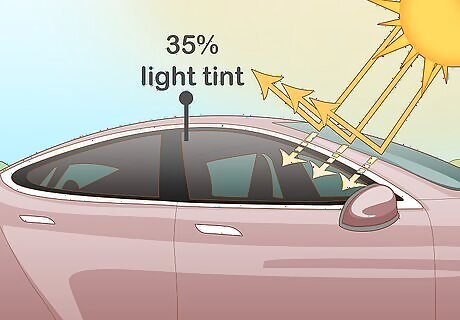
Install window tinting on your windshield and windows if it's legal. This reduces the amount of direct sunlight coming into your car. Check the laws in your area to ensure this is legal. Some places don't allow tinting that's a certain darkness or tinting on the front windows, for example. Window tint is measured in percentage based on how much light it lets through. For example, 35% lets in 35% of the light. The lower the tint percentage, the darker the tint. Take your car to an auto shop to have it tinted or tint the windows yourself. Tinting also protects your interior from UV radiation which can damage your car's upholstery and dashboard.
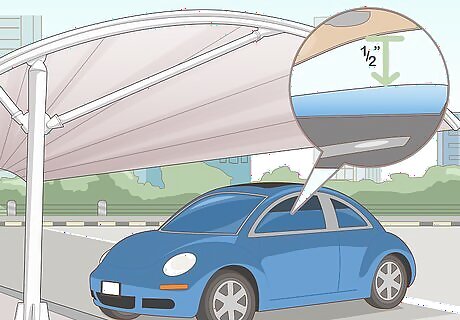
Park with the windows down ⁄2 inch (1.3 cm) if you're in a safe area. This allows the hot air to escape, keeping the whole cabin cooler. Only leave your windows cracked if your car is parked somewhere where the risk of theft is low. Use common sense when deciding whether or not to leave them open. Check the weather, too. Don't roll the windows down if it's raining, unless you park in a covered area. If you're parked in your own private garage, roll the windows down all the way. Never leave kids or pets in a hot parked car.
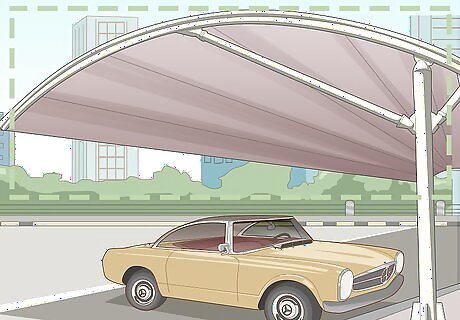
Park in the shade or in a covered area to block sunlight. This makes a major difference in how cool your car will be when you return. Look for trees, parking garages, or even shadows from tall buildings or structures. The lowest level of a parking garage is the coolest. In parking lots, if you're going to be parked for a long period of time, try to predict where the shade will move based on the sun. If you can't find shade, create your own by placing sun shields on any windows that are exposed to sunlight.
Changing How You Travel
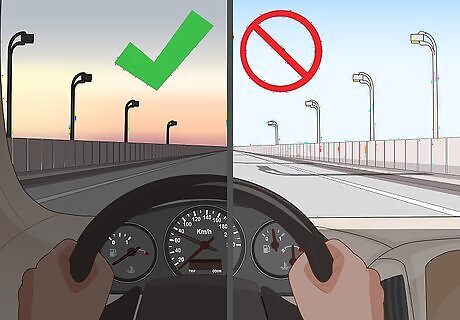
Drive during the coolest times of the day like the early morning or night. If your schedule allows for it, do as much of your traveling as possible when the heat is more bearable or when there's less direct sunlight. Try to avoid driving home mid-afternoon, for example. Before the sun rises is often the coolest time of the day. Overcast days also make for cooler travel. However, avoid rain because it means you won't be able to open your windows.
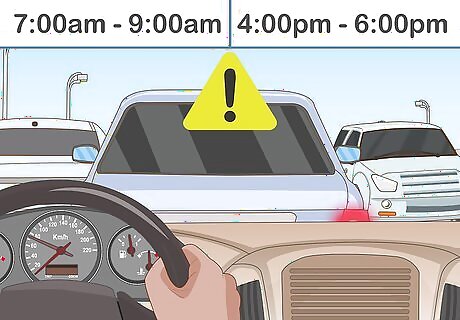
Avoid driving in traffic where you won't get any airflow. Bumper-to-bumper traffic means your car is hardly moving, and if your windows are open, there's barely any air coming in or out. This can get very stifling. Rush hour is one of the worst times for traffic. In the morning, rush hour is typically from 7-9 a.m. In the evening, it's often from about 4-6 p.m. Other high-traffic times or spots include holiday weekends, construction areas, or days when there are major events in your area like a concert or sports event.
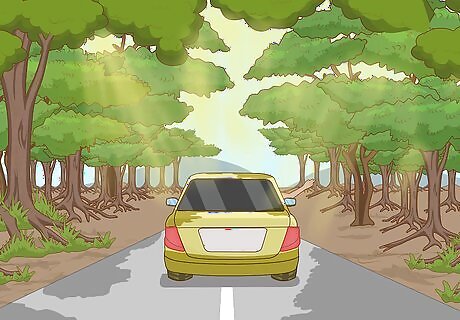
Choose shady routes for your everyday travel. The more time you spend out of direct sunlight, the cooler you and your car will be. Tree-lined streets and roadways are often shadier than open highways. Take wooded backroads if possible when running errands or commuting to work. Keep in mind that backroads or neighborhood roads may make your commute longer. Adjust your travel time accordingly.




















Comments
0 comment